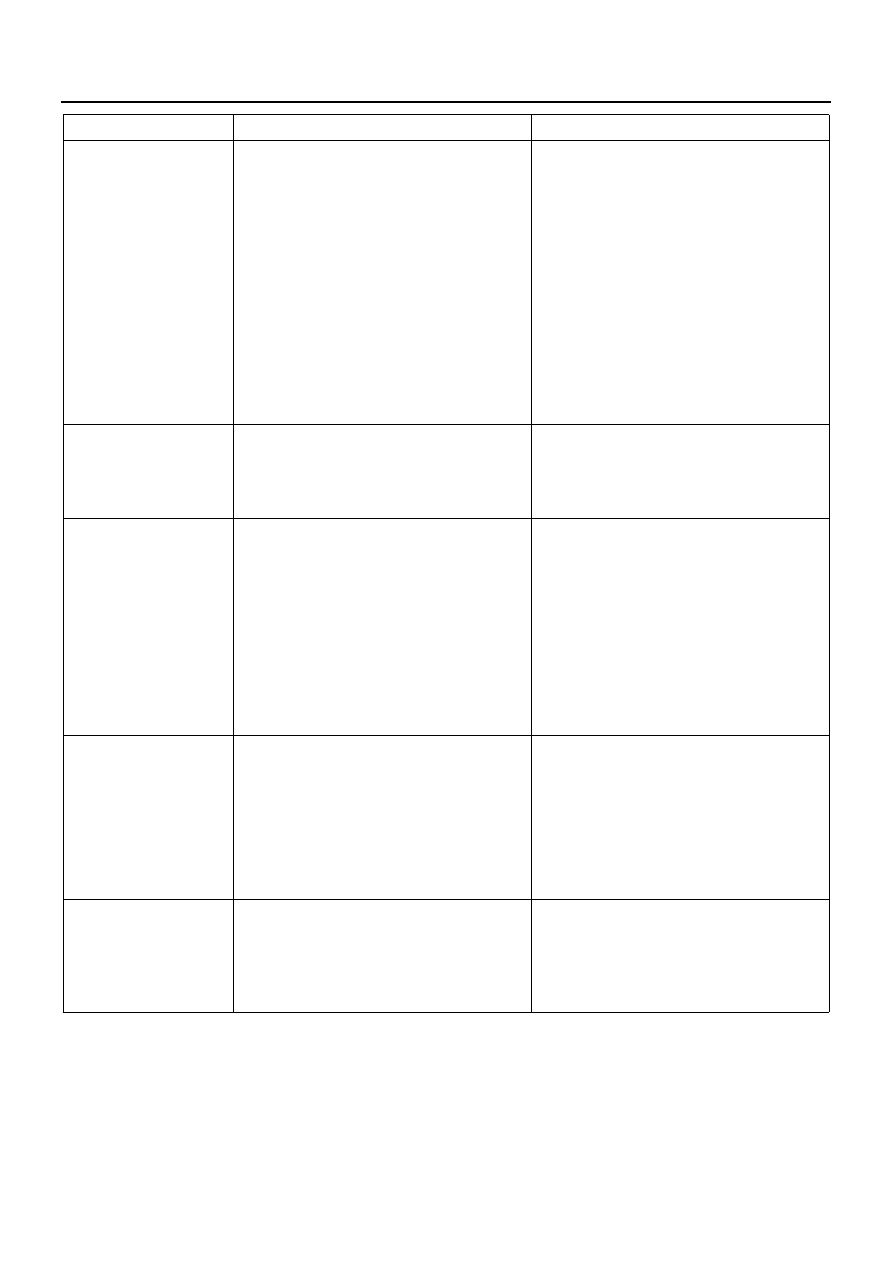Isuzu N-Series. Service manual - part 197

SERVICE INFORMATION 00-5
Low Pedal or Pedal
Goes to Floor
1. Excessive clearance between the lin-
ings and drum.
1. Adjust the brakes.
2. Pedal stop not adjusted, or missing.
2. Adjust or install the pedal stop.
3. Weak brake hose.
3. Replace with new hose.
4. Leaking wheel cylinder.
4. Clean and rebuild.
5. Air in the hydraulic system.
5. Bleed the hydraulic system.
6. Improper brake fluid (low boiling point).
6. Flush the system and refill with recom-
mended brake fluid.
7. Low fluid level.
7. Fill the reservoir with brake fluid; check
for leaks and bleed system.
8. Bent or distorted brake shoes.
8. Replace in axle sets.
9. Leaks at hydraulic line connections.
9. Check for hydraulic leaks and repair.
Slow Brake Release
1. Foot pedal binding.
1. Lubricate the pivot pin; clean-check for
foreign objects.
2. Restriction in the line.
2. Remove the restriction or replace line.
3. Weak shoe return spring.
3. Replace the spring.
Poor Assist or Loss of
Assit
1. Low brake fluid level.
1. Fill the reservoir to the proper level.
Bleed the system.
2. Air in the hydraulic system.
2. Locate the source of the air leak and re-
pair. Bleed the system.
3. Weak brake hose.
3. Replace.
4. Loss of vacuum.
4. Inspect for vacuum leaks or malfunc-
tioning pump. Repair or replace as nec-
essary.
5. No brake fluid at the master cylinder.
5. Check for plugged, kinked, or damaged
hose to the reservoir.
Brake Fade
1. Incorrect lining/pad.
1. Replace with recommended lining/pad.
2. Poor lining/pad contact.
2. Grind the lining/pad to the proper radi-
us; adjust.
3. Thin drum.
3. Replace the drum.
4. Dragging brakes.
4. Adjust.
5. All conditions listed under “Pulls to One
Side”.
5. All corrections listed under “Pulls to
One Side”.
All Brakes Drag when
Adjustment is Known
to be Correct
1. Pedal does not return to stop.
1. Lubricate the pedal linkage; adjust the
pedal.
2. Improper fluid.
2. Replace rubber parts and fill with the
recommended brake fluid.
3. Use of incorrect rubber parts.
3. Install the proper parts.
PROBLEM
POSSIBLE CAUSE
CORRECTION